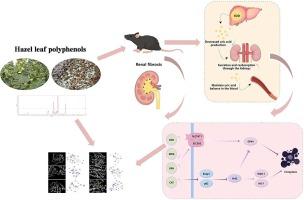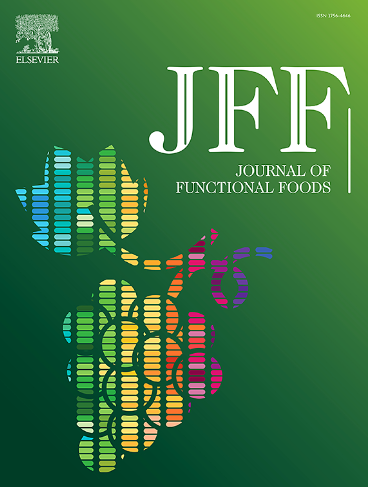Hazel leaf polyphenols ameliorate hyperuricemia-induced renal fibrosis through regulating uric acid metabolism and inhibiting ferroptosis via the Nrf2/GPX4 signaling axis
IF 3.8
2区 农林科学
Q2 FOOD SCIENCE & TECHNOLOGY
引用次数: 0
Abstract
Hazel leaves, a by-product of hazelnut, have been consumed for health care in some countries and regions for hundreds of years. Based on our previous results, this study further investigated the protective effects of hazel leaf polyphenols (HP) on renal fibrosis induced by hyperuricemia in mice. Results showed that they significantly reduced serum UA, BUN and CRE contents, inhibited liver XOD activity. Histological examination and Western blot analysis revealed that they renal pathological changes and fibrosis were obviously improved after HP administration. Additionally, combined with TEM, they attenuated oxidative stress and mitochondrial damage, and inhibited ferroptosis by regulating the expression of related proteins. Molecular docking predicted that chlorogenic acid, p-coumaric acid, luteolin, myricetin and kaempferol may be the key active ingredients. In conclusion, HP ameliorated hyperuricemia-induced renal fibrosis through regulating uric acid production, reabsorption and excretion, and inhibiting ferroptosis through Nrf2/GPX4 signaling axis. It provides a valuable basis for the utilization of hazel leaf polyphenols as health agents in the future.

榛叶多酚通过 Nrf2/GPX4 信号轴调节尿酸代谢和抑制铁卟啉沉积,从而改善高尿酸血症诱发的肾脏纤维化
榛子叶是榛子的副产品,一些国家和地区食用榛子叶来保健已有数百年的历史。本研究在之前研究成果的基础上,进一步探讨了榛叶多酚(HP)对高尿酸血症诱导的小鼠肾脏纤维化的保护作用。结果表明,榛叶多酚能明显降低血清 UA、BUN 和 CRE 含量,抑制肝脏 XOD 活性。组织学检查和 Western 印迹分析表明,服用 HP 后肾脏病理变化和纤维化明显改善。此外,与 TEM 联用,它们还能减轻氧化应激和线粒体损伤,并通过调节相关蛋白的表达来抑制铁变态反应。分子对接预测绿原酸、对香豆酸、叶黄素、杨梅素和山奈酚可能是主要的活性成分。总之,HP通过调节尿酸的产生、重吸收和排泄,并通过Nrf2/GPX4信号轴抑制铁跃迁,从而改善高尿酸血症诱发的肾脏纤维化。这为今后利用榛叶多酚作为保健药物提供了宝贵的依据。
本文章由计算机程序翻译,如有差异,请以英文原文为准。
求助全文
约1分钟内获得全文
求助全文
来源期刊

Journal of Functional Foods
FOOD SCIENCE & TECHNOLOGY-
CiteScore
9.60
自引率
1.80%
发文量
428
审稿时长
76 days
期刊介绍:
Journal of Functional Foods continues with the same aims and scope, editorial team, submission system and rigorous peer review. We give authors the possibility to publish their top-quality papers in a well-established leading journal in the food and nutrition fields. The Journal will keep its rigorous criteria to screen high impact research addressing relevant scientific topics and performed by sound methodologies.
The Journal of Functional Foods aims to bring together the results of fundamental and applied research into healthy foods and biologically active food ingredients.
The Journal is centered in the specific area at the boundaries among food technology, nutrition and health welcoming papers having a good interdisciplinary approach. The Journal will cover the fields of plant bioactives; dietary fibre, probiotics; functional lipids; bioactive peptides; vitamins, minerals and botanicals and other dietary supplements. Nutritional and technological aspects related to the development of functional foods and beverages are of core interest to the journal. Experimental works dealing with food digestion, bioavailability of food bioactives and on the mechanisms by which foods and their components are able to modulate physiological parameters connected with disease prevention are of particular interest as well as those dealing with personalized nutrition and nutritional needs in pathological subjects.
 求助内容:
求助内容: 应助结果提醒方式:
应助结果提醒方式:


